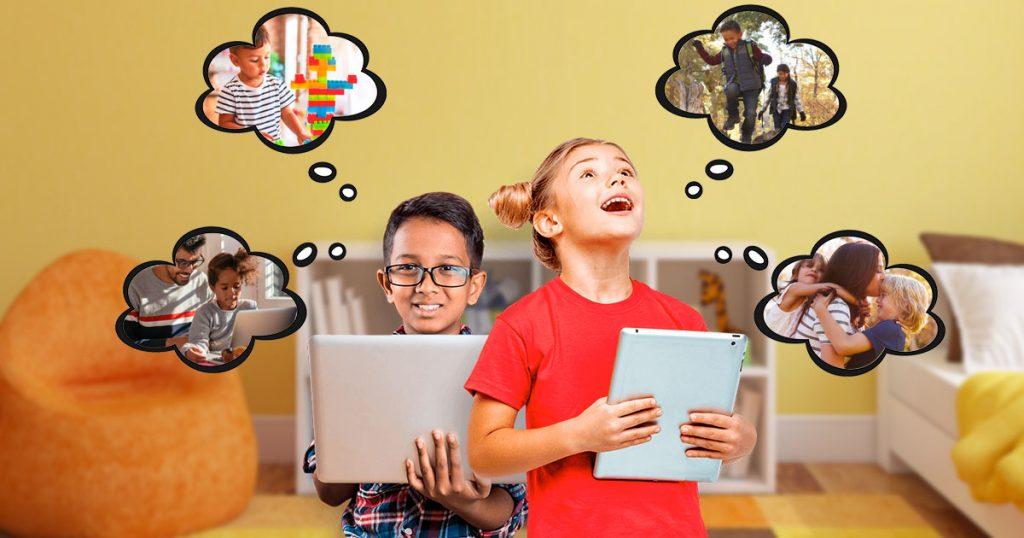Early childhood education includes programs, activities, and experiences designed for kids from birth to about eight years old, a time when their brains grow quickly and are highly influenced by their surroundings. It takes a well-rounded approach, supporting children’s physical, emotional, social, and mental growth. Early childhood education is incredibly important because it has a lasting impact on both children and society. These early years are a key time for learning and development, and quality early education leads to lifelong benefits.
It focuses on creating fun and age-appropriate learning spaces, using good teaching methods, and building strong partnerships between teachers, parents, and communities.
Pros of Early Childhood Education
Early childhood education is very important because it lays the groundwork for a child’s physical, mental, social, and emotional growth. Studies have shown that early experiences play a huge role in shaping a child’s brain and overall well-being.
Good early education helps kids pick up key skills, gets them ready for school, and sets them up for long-term success. It also plays a big part in closing achievement gaps, reducing inequalities, and breaking the cycle of poverty.
Benefits Of Family Involvement In Early Childhood Education
Family involvement in early childhood education is incredibly important because it has a big impact on a child’s growth and learning journey. When parents actively participate in their child’s early education, it strengthens the connection between home and school, bringing a lot of benefits.
For starters, family involvement helps emotional and social development by providing a safe and supportive environment. Kids feel loved and valued, which boosts their self-esteem, confidence, and social skills.
Parents also play a key role in preparing their children academically. By doing activities like reading together and encouraging early literacy and math skills, they help build a strong foundation for future academic success. It also deepens the parent-child bond, giving children a sense of belonging and security.
Moreover, parents pass on cultural and moral values, shaping their child’s beliefs and traditions. Working together with teachers ensures a consistent approach to learning, allowing for open communication about the child’s progress. In the end, family involvement leads to better educational outcomes, smoother transitions, and overall well-being for the child.
Effective Practices in Early Childhood Education at Home
Their participation at home is crucial for their child’s overall growth and well-being. While educators offer guidance and teaching in formal settings, parents have the chance to continue that learning outside the classroom.
1. Establishing a Daily Routine
Create a predictable and consistent routine that includes regular times for meals, play, learning activities, rest, and bedtime. Routines provide structure and help children feel secure and organized.
2. Encouraging Language Development
Talk with your child, read books together, sing songs, and share stories. Create a space where they feel comfortable expressing themselves and asking questions about the world. This helps boost their language skills, vocabulary, and communication abilities.
3. Providing Hands-on Learning Experiences
Provide a variety of fun activities and resources that spark your child’s curiosity and creativity. This could be puzzles, building blocks, art supplies, sensory bins, or exploring nature. Getting hands-on helps boost their thinking skills and ability to solve problems.
4. Promoting Independent Play
Allow your child to engage in independent play, where they can explore their interests, use their imagination, and problem-solve on their own. Create a secure and engaging setting that fosters independent exploration and nurtures your child’s creativity.
5. Creating a Print-Rich Environment
Surround your home with print materials, such as books, labels, and posters. Display your child’s artwork and written creations. This exposes them to literacy and helps develop pre-reading skills.
6. Incorporating Real-Life Experiences
Involve your child in everyday activities, such as cooking, cleaning, gardening, and grocery shopping. These experiences provide opportunities for learning about math, science, language, and practical life skills.
7. Encouraging Outdoor Exploration
Spend time outdoors with your child, whether it’s in your backyard, local parks, or nature trails. Engage in nature walks, observe plants and animals, and engage in physical activities. Outdoor play supports gross motor skills, cognitive development, and overall well-being.
8. Limiting Screen Time
Establish suitable boundaries for screen time and ensure that the content is educational and suitable for your child’s age. Maintain a healthy balance by incorporating hands-on learning, social interaction, and physical exercise alongside screen activities.
9. Building Positive Relationships
Foster positive relationships within the family by spending quality time together, engaging in meaningful conversations, and showing love and affection. Strong family relationships create a nurturing environment for a child’s overall development.
10. Collaborating with Early Childhood Educators
Sustain open lines of communication with the educators involved in your child’s early childhood education. Share information, discuss your child’s progress, and ask for guidance on how to support their learning and development at home.
Foster Positive Growth with Family Participation in Early Education
Early childhood education starts at home and is a shared responsibility between parents and educators. While teachers offer formal instruction and guidance in school, parents play a key role in supporting their child’s development and learning. As the primary educators, parents have a significant influence on their child’s educational journey right from the start.

